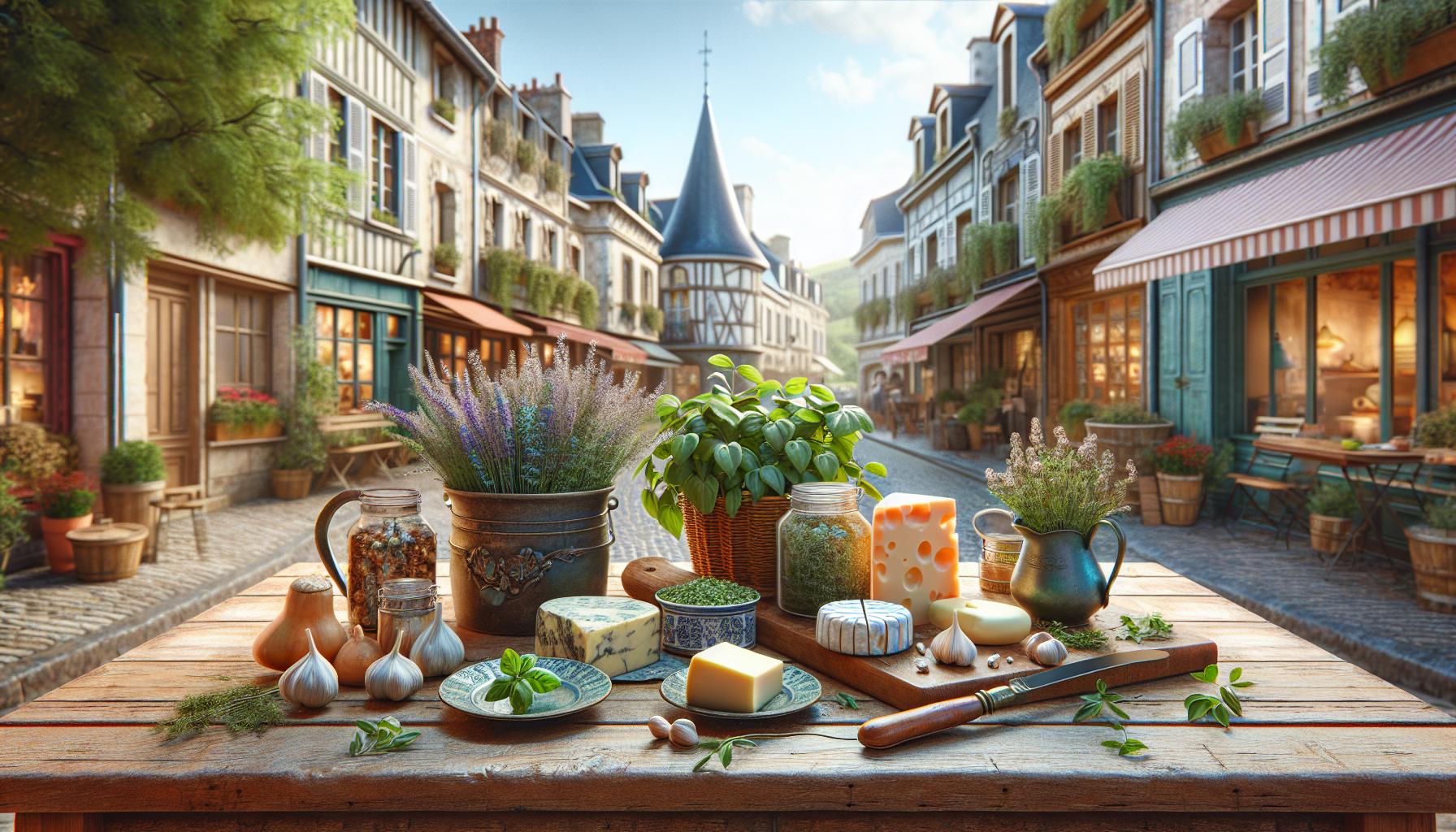The Best Fluffy Pancakes recipe you will fall in love with. Full of tips and tricks to help you make the best pancakes.
French cuisine stands as a testament to the art of fine dining where every meal transforms into a celebration of life. From flaky croissants at sunrise to late-night cheese plates paired with vintage wines French food culture embodies sophistication and joie de vivre. It’s no wonder UNESCO recognized French gastronomy as part of humanity’s intangible cultural heritage.
The French approach to food goes far beyond mere sustenance. It’s an intricate dance of flavors textures and traditions passed down through generations. Each region boasts its own specialties from Provence’s ratatouille to Burgundy’s coq au vin creating a diverse tapestry of tastes that has influenced culinary arts worldwide. Whether it’s a casual bistro lunch or a formal dinner the French dedication to quality ingredients and proper technique remains unwavering.
The Significance of Food in French Culture
French culinary traditions transcend mere sustenance to embody a cultural philosophy centered on appreciation sensory experiences. The French approach to food intertwines social connections with gastronomic excellence.
Family Meals and Social Bonding
French meals serve as anchors for family gatherings lasting 2-3 hours on average. Families gather at the table for lunch at 12:30 PM each day, treating midday meals as sacred social occasions. Children participate in mealtime conversations about food quality taste preferences while learning proper dining manners. Weekend lunches extend into late afternoon discussions as multiple generations share traditional recipes passed down through families. The ritual of breaking bread together strengthens familial bonds through shared culinary experiences.
The French Art of Dining Etiquette
French dining etiquette emphasizes proper posture keeping elbows off the table maintaining eye contact with fellow diners. A formal French dinner includes 4-6 distinct courses served in a specific sequence: aperitif starter main course cheese plate dessert digestif. Diners place bread directly on the tablecloth rather than on plates hold wine glasses by the stem express appreciation to hosts with “bon appétit.” Table conversations flow naturally between courses as guests discuss food preparation techniques seasonal ingredients wine pairings. The measured pace allows everyone to savor both the cuisine social interactions equally.
Essential Components of French Cuisine

French cuisine stands as a testament to the art of combining quality ingredients with precise cooking techniques. The foundation of French cooking rests on specific ingredients, methods, and regional variations that create distinctive culinary experiences.
Classic French Ingredients
Fresh herbs like thyme, bay leaves, tarragon and parsley form the cornerstone of French cooking. Local butter, particularly from regions like Normandy and Brittany, enriches sauces and pastries. High-quality wines contribute depth to classic dishes through deglazing and reduction techniques. Fresh vegetables including shallots, leeks and mushrooms create the base for numerous recipes. Essential pantry items include Dijon mustard, crème fraîche and fine sea salt. French chefs prioritize seasonal produce from local markets, selecting ingredients at peak ripeness. Artisanal cheeses ranging from soft Brie to aged Roquefort play central roles in both cooking and cheese courses.
Regional Specialties Across France
Each French region boasts distinctive culinary traditions shaped by local ingredients and cultural heritage. Provence celebrates Mediterranean flavors with olive oil, tomatoes and herbs in dishes like bouillabaisse. Burgundy specializes in beef dishes including boeuf bourguignon paired with local wines. Brittany offers seafood specialties such as moules marinières and sweet crêpes. The Alps region produces hearty dishes like raclette and fondue using mountain cheeses. Alsace combines French and German influences in dishes like choucroute garnie and tarte flambée. The Loire Valley features fresh river fish preparations and goat cheese specialties. Normandy excels in apple-based products including calvados and butter-rich pastries.
The French Meal Structure
French dining follows a structured sequence of courses that creates a balanced culinary experience. Each meal represents a carefully orchestrated progression of flavors complemented by specific wine pairings.
Course-by-Course Dining Traditions
A traditional French dinner consists of four distinct courses. The entrée (starter) features light dishes like soups or salads to stimulate the appetite. The plat principal (main course) presents protein-focused dishes such as meat or fish accompanied by vegetables. The fromage (cheese course) offers 3-4 varieties of cheese served with crusty bread. The dessert completes the meal with sweet treats like tarts or mousses. Special occasions expand this structure to include an amuse-bouche before the starter a palate cleanser between courses.
| Course | Timing | Common Examples |
|---|---|---|
| Entrée | 15-20 min | Soups, salads, pâtés |
| Plat Principal | 30-40 min | Coq au vin, beef bourguignon |
| Fromage | 15-20 min | Brie, Camembert, Roquefort |
| Dessert | 15-20 min | Crème brûlée, tarte tatin |
Wine Pairing Customs
French wine pairings follow established protocols based on food characteristics. White wines accompany seafood fish poultry. Red wines complement red meats game dishes. Champagne pairs with appetizers celebratory courses. The sommelier suggests wines that match both the dish’s flavor profile the diner’s preferences. Regional wine selections often correspond to local cuisine creating authentic taste combinations. French restaurants maintain extensive wine cellars featuring vintages from various regions to ensure proper pairing options.
| Wine Type | Food Pairing |
|---|---|
| White Burgundy | Shellfish, cream sauces |
| Bordeaux Red | Lamb, beef dishes |
| Loire Valley White | Goat cheese, light fish |
| Champagne | Appetizers, desserts |
Modern French Food Culture
French cuisine continues to evolve while maintaining its cultural significance. The modern French food scene balances traditional gastronomy with contemporary influences, adapting to changing lifestyles and global culinary trends.
Contemporary Dining Habits
Modern French dining combines traditional practices with new lifestyle demands. Urban professionals opt for shorter lunch breaks at bistros or grab-and-go eateries, though the sacred two-hour weekend family lunch remains intact. Food delivery apps service 15 million French customers monthly, particularly in metropolitan areas like Paris Lyon. Fast-casual restaurants serving classic French dishes with a modern twist have grown by 30% since 2018. Despite these changes, 75% of French families maintain regular sit-down dinners featuring fresh ingredients prepared at home.
Preserving Culinary Heritage
French culinary institutions actively safeguard traditional cooking methods through structured programs. The government-backed “Maîtres Restaurateurs” certification recognizes 3,900 restaurants nationwide for maintaining authentic French cooking standards. Culinary schools like Le Cordon Bleu train 20,000 students annually in classical French techniques. Local food markets preserve regional specialties, with 10,000 weekly markets operating across France. The “Meilleurs Ouvriers de France” competition identifies exceptional craftspeople in traditional food trades including baking patisserie charcuterie cheese-making.
International Influence of French Gastronomy
French gastronomy sets global culinary standards through its techniques, training methods and cultural practices. Its influence extends beyond restaurant kitchens to shape dining customs worldwide.
Global Impact on Fine Dining
French culinary techniques form the foundation of professional kitchens across 75% of Michelin-starred restaurants globally. The brigade system, developed by Auguste Escoffier, organizes restaurant kitchens in 85% of fine dining establishments worldwide. Classical French cooking methods like sautéing, braising and flambéing appear in diverse cuisines from Japanese fusion to modern American restaurants.
Top culinary institutions train 150,000 international students annually in French techniques, with graduates leading restaurants in 120 countries. French terminology permeates professional kitchens, with terms like mise en place, julienne and sauté becoming universal cooking vocabulary. Major culinary destinations including Singapore, Tokyo and New York feature over 500 French restaurants combined.
UNESCO Recognition
UNESCO designated French gastronomy as an Intangible Cultural Heritage in 2010, marking the first time a country’s culinary culture received this distinction. The recognition specifically highlights the French gastronomic meal’s social practices, rituals and emphasis on togetherness.
Key elements earning UNESCO status include:
- Multi-course meal structures adopted by restaurants worldwide
- Wine pairing protocols used in 90% of fine dining establishments
- Traditional cooking techniques taught in 250 international culinary schools
- Food presentation standards replicated across global cuisines
The designation protects specific French culinary traditions through documentation projects, preserving 1,200 classic recipes and 150 traditional preparation methods.
Conclusion
French food culture stands as a testament to the enduring power of culinary traditions in shaping society. From local markets to Michelin-starred restaurants the French approach to dining continues to influence global gastronomy while adapting to modern needs.
The careful preservation of traditional techniques alongside the evolution of contemporary dining habits ensures that French cuisine remains both relevant and authentic. This delicate balance between heritage and innovation showcases why French gastronomy isn’t just about food – it’s an art form that celebrates life shared meals and cultural identity.

